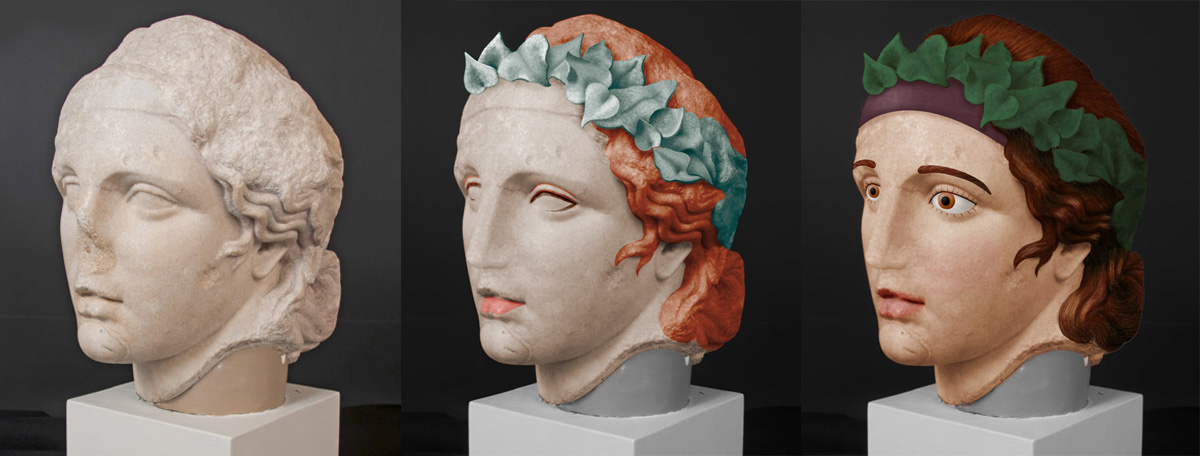Case Study: Marble Bacchus Head
We often think of ancient marble statuary as being colorless, but most Roman sculptures and architectural works were originally brightly painted. This marble head of Bacchus is no exception.

The traces of red pigment in the hair are relatively easy to see, but we suspected there might be microscopic traces of color in other areas. To find out, we explored the surface of the head for pigment using a Dino-Lite digital microscope as well as multispectral imaging (MSI). To our surprise, we discovered a lot of color, including traces of what could be red lead or cinnabar/vermilion on the inner corner of the mouth, and black and red pigment along the inside of the eyes and in the tear ducts. The biggest surprise was revealed in the MSI imaging: luminescent areas of Egyptian blue in the garland of ivy leaves in the hair. The amount of blue was so small that we did not see it with the digital microscope (view a silent video of Carrie Roberts investigating Bacchus).
This physical evidence, along with curators Elaine Gazda’s and Nicola Barham’s knowledge of Roman sculpture and painting, allowed us to create this digital reconstruction of what the Bacchus head might have looked like in full color. Note: the red pigment in the hair was likely underpaint for the final color, while the blue in the leaves was likely mixed with a yellow pigment to create green.
